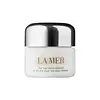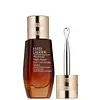What's inside
What's inside
 Key Ingredients
Key Ingredients

 Benefits
Benefits

 Concerns
Concerns

 Ingredients Side-by-side
Ingredients Side-by-side

Water
Skin ConditioningLaminaria Digitata Extract
Skin ProtectingButyrospermum Parkii Butter
Skin ConditioningButylene Glycol
HumectantPolyethylene
AbrasiveHydrogenated Polyisobutene
EmollientDimethicone
EmollientCetyl Esters
EmollientCetearyl Alcohol
EmollientMalachite
Skin ConditioningPolybutene
Isostearyl Neopentanoate
EmollientSilica
AbrasiveTrisiloxane
Skin ConditioningYeast Extract
Skin ConditioningCaffeine
Skin ConditioningCholesterol
EmollientAscophyllum Nodosum Extract
Skin ConditioningAsparagopsis Armata Extract
Skin ProtectingGelidium Cartilagineum Extract
Skin ProtectingSaccharomyces Lysate Extract
HumectantSesamum Indicum Seed Oil
EmollientEucalyptus Globulus Leaf Oil
PerfumingSesamum Indicum Seed
AbrasiveMedicago Sativa Seed Powder
Skin ConditioningHelianthus Annuus Seedcake
AbrasivePrunus Amygdalus Dulcis Seed Meal
AbrasiveSodium Gluconate
Skin ConditioningPotassium Gluconate
Skin ProtectingCopper Gluconate
Skin ConditioningCalcium Gluconate
HumectantMagnesium Gluconate
Skin ConditioningZinc Gluconate
Skin ConditioningTocopheryl Succinate
AntioxidantNiacin
SmoothingSigesbeckia Orientalis Extract
Skin ConditioningLactis Proteinum
Skin ConditioningSucrose
HumectantElaeis Guineensis Oil
EmollientMethyl Glucose Sesquistearate
EmollientCetearyl Glucoside
EmulsifyingGlycerin
HumectantAminomethyl Propanol
BufferingGlyceryl Distearate
EmollientTetraacetylphytosphingosine
Skin ConditioningLinoleic Acid
CleansingSorbitol
HumectantAcrylates/C10-30 Alkyl Acrylate Crosspolymer
Emulsion StabilisingSteareth-10
EmulsifyingMagnesium Ascorbyl Phosphate
AntioxidantVinyl Dimethicone/Methicone Silsesquioxane Crosspolymer
Sodium Hyaluronate
HumectantTocotrienols
Skin ConditioningHexylene Glycol
EmulsifyingPhytosphingosine
Skin ConditioningIsododecane
EmollientTocopherol
AntioxidantSqualene
EmollientPropylene Glycol Diheptanoate
EmollientPhytosterols
Skin ConditioningTrimethylsiloxysilicate
EmollientCaprylyl Glycol
EmollientAcetyl Hexapeptide-8
HumectantCarbomer
Emulsion StabilisingParfum
MaskingTourmaline
Disodium EDTA
Sodium Dehydroacetate
PreservativePhenoxyethanol
PreservativeLinalool
PerfumingLimonene
PerfumingBenzyl Salicylate
PerfumingCI 42090
Cosmetic ColorantCI 19140
Cosmetic ColorantCI 77891
Cosmetic ColorantCI 61570
Cosmetic ColorantWater, Laminaria Digitata Extract, Butyrospermum Parkii Butter, Butylene Glycol, Polyethylene, Hydrogenated Polyisobutene, Dimethicone, Cetyl Esters, Cetearyl Alcohol, Malachite, Polybutene, Isostearyl Neopentanoate, Silica, Trisiloxane, Yeast Extract, Caffeine, Cholesterol, Ascophyllum Nodosum Extract, Asparagopsis Armata Extract, Gelidium Cartilagineum Extract, Saccharomyces Lysate Extract, Sesamum Indicum Seed Oil, Eucalyptus Globulus Leaf Oil, Sesamum Indicum Seed, Medicago Sativa Seed Powder, Helianthus Annuus Seedcake, Prunus Amygdalus Dulcis Seed Meal, Sodium Gluconate, Potassium Gluconate, Copper Gluconate, Calcium Gluconate, Magnesium Gluconate, Zinc Gluconate, Tocopheryl Succinate, Niacin, Sigesbeckia Orientalis Extract, Lactis Proteinum, Sucrose, Elaeis Guineensis Oil, Methyl Glucose Sesquistearate, Cetearyl Glucoside, Glycerin, Aminomethyl Propanol, Glyceryl Distearate, Tetraacetylphytosphingosine, Linoleic Acid, Sorbitol, Acrylates/C10-30 Alkyl Acrylate Crosspolymer, Steareth-10, Magnesium Ascorbyl Phosphate, Vinyl Dimethicone/Methicone Silsesquioxane Crosspolymer, Sodium Hyaluronate, Tocotrienols, Hexylene Glycol, Phytosphingosine, Isododecane, Tocopherol, Squalene, Propylene Glycol Diheptanoate, Phytosterols, Trimethylsiloxysilicate, Caprylyl Glycol, Acetyl Hexapeptide-8, Carbomer, Parfum, Tourmaline, Disodium EDTA, Sodium Dehydroacetate, Phenoxyethanol, Linalool, Limonene, Benzyl Salicylate, CI 42090, CI 19140, CI 77891, CI 61570
Water
Skin ConditioningDimethicone
EmollientBifida Ferment Lysate
Skin ConditioningIsohexadecane
EmollientGlycerin
HumectantButylene Glycol
HumectantBis-PEG-18 Methyl Ether Dimethyl Silane
EmollientPEG-10 Dimethicone
Skin ConditioningDisteardimonium Hectorite
StabilisingIsopropyl Isostearate
EmollientPPG-15 Stearyl Ether
EmollientSucrose
HumectantTrehalose
HumectantAdansonia Digitata Seed Extract
Skin ConditioningTripeptide-32
Skin ConditioningYeast Extract
Skin ConditioningSodium Hyaluronate
HumectantLactobacillus Ferment
Skin ConditioningAlgae Extract
EmollientSodium Rna
Skin ConditioningHydrolyzed Algin
Caffeine
Skin ConditioningHydroxyethyl Urea
HumectantAminopropyl Ascorbyl Phosphate
AntioxidantCucumis Sativus Fruit Extract
EmollientAnthemis Nobilis Flower Extract
MaskingHordeum Vulgare Extract
EmollientSilybum Marianum Extract
Skin ConditioningGlycine Soja Seed Extract
Skin ConditioningCamelina Sativa Seed Oil
Skin ConditioningSorbitol
HumectantBetula Alba Bud Extract
Skin ConditioningScutellaria Baicalensis Root Extract
AstringentMorus Bombycis Root Extract
Skin ConditioningPoria Cocos Sclerotium Extract
AstringentTocopheryl Acetate
AntioxidantPropylene Glycol Dicaprate
EmollientSodium Polyaspartate
HumectantHydrogenated Lecithin
EmulsifyingPhytosphingosine
Skin ConditioningEthylhexylglycerin
Skin ConditioningPolysilicone-11
Isododecane
EmollientHelianthus Annuus Seed Extract
Skin ConditioningPolyethylene
AbrasivePropylene Carbonate
SolventPolyacrylate Crosspolymer-6
Emulsion StabilisingLecithin
EmollientGlucose
HumectantFructose
HumectantT-Butyl Alcohol
PerfumingDisodium EDTA
BHT
AntioxidantHydroxyacetophenone
AntioxidantSodium Dehydroacetate
PreservativePotassium Sorbate
PreservativePhenoxyethanol
PreservativeCI 77491
Cosmetic ColorantWater, Dimethicone, Bifida Ferment Lysate, Isohexadecane, Glycerin, Butylene Glycol, Bis-PEG-18 Methyl Ether Dimethyl Silane, PEG-10 Dimethicone, Disteardimonium Hectorite, Isopropyl Isostearate, PPG-15 Stearyl Ether, Sucrose, Trehalose, Adansonia Digitata Seed Extract, Tripeptide-32, Yeast Extract, Sodium Hyaluronate, Lactobacillus Ferment, Algae Extract, Sodium Rna, Hydrolyzed Algin, Caffeine, Hydroxyethyl Urea, Aminopropyl Ascorbyl Phosphate, Cucumis Sativus Fruit Extract, Anthemis Nobilis Flower Extract, Hordeum Vulgare Extract, Silybum Marianum Extract, Glycine Soja Seed Extract, Camelina Sativa Seed Oil, Sorbitol, Betula Alba Bud Extract, Scutellaria Baicalensis Root Extract, Morus Bombycis Root Extract, Poria Cocos Sclerotium Extract, Tocopheryl Acetate, Propylene Glycol Dicaprate, Sodium Polyaspartate, Hydrogenated Lecithin, Phytosphingosine, Ethylhexylglycerin, Polysilicone-11, Isododecane, Helianthus Annuus Seed Extract, Polyethylene, Propylene Carbonate, Polyacrylate Crosspolymer-6, Lecithin, Glucose, Fructose, T-Butyl Alcohol, Disodium EDTA, BHT, Hydroxyacetophenone, Sodium Dehydroacetate, Potassium Sorbate, Phenoxyethanol, CI 77491
 Reviews
Reviews

Ingredients Explained
These ingredients are found in both products.
Ingredients higher up in an ingredient list are typically present in a larger amount.
Butylene Glycol (or BG) is used within cosmetic products for a few different reasons:
Overall, Butylene Glycol is a safe and well-rounded ingredient that works well with other ingredients.
Though this ingredient works well with most skin types, some people with sensitive skin may experience a reaction such as allergic rashes, closed comedones, or itchiness.
Learn more about Butylene GlycolCaffeine is most associated with coffee, tea, and cacao. In skincare, it helps with calming inflammation and is rich in antioxidants.
While caffeine is used to treat cellulite and and dark circles, further studies are needed to prove this. It has been believed to help with these skin conditions due to its ability to dilate blood vessels and increase blood flow.
Some studies are looking into caffeine's ability to protect against UV rays.
Learn more about CaffeineDimethicone is a type of synthetic silicone created from natural materials such as quartz.
What it does:
Dimethicone comes in different viscosities:
Depending on the viscosity, dimethicone has different properties.
Ingredients lists don't always show which type is used, so we recommend reaching out to the brand if you have questions about the viscosity.
This ingredient is unlikely to cause irritation because it does not get absorbed into skin. However, people with silicone allergies should be careful about using this ingredient.
Note: Dimethicone may contribute to pilling. This is because it is not oil or water soluble, so pilling may occur when layered with products. When mixed with heavy oils in a formula, the outcome is also quite greasy.
Learn more about DimethiconeDisodium EDTA plays a role in making products more stable by aiding other preservatives.
It is a chelating agent, meaning it neutralizes metal ions that may be found in a product.
Disodium EDTA is a salt of edetic acid and is found to be safe in cosmetic ingredients.
Learn more about Disodium EDTAGlycerin is already naturally found in your skin. It helps moisturize and protect your skin.
A study from 2016 found glycerin to be more effective as a humectant than AHAs and hyaluronic acid.
As a humectant, it helps the skin stay hydrated by pulling moisture to your skin. The low molecular weight of glycerin allows it to pull moisture into the deeper layers of your skin.
Hydrated skin improves your skin barrier; Your skin barrier helps protect against irritants and bacteria.
Glycerin has also been found to have antimicrobial and antiviral properties. Due to these properties, glycerin is often used in wound and burn treatments.
In cosmetics, glycerin is usually derived from plants such as soybean or palm. However, it can also be sourced from animals, such as tallow or animal fat.
This ingredient is organic, colorless, odorless, and non-toxic.
Glycerin is the name for this ingredient in American English. British English uses Glycerol/Glycerine.
Learn more about GlycerinIsododecane is a fragrance, emollient, and solvent.
As an emollient, it helps your skin stay soft and hydrated. Emollients help trap moisture into your skin.
Isododecane's role as a solvent makes it a great texture enhancer. It spreads smoothly on skin and does not leave a sticky feeling behind. Isododecane also helps prevent color transfer in makeup products.
Isododecane is not absorbed into skin.
Learn more about IsododecanePhenoxyethanol is a preservative that has germicide, antimicrobial, and aromatic properties. Studies show that phenoxyethanol can prevent microbial growth. By itself, it has a scent that is similar to that of a rose.
It's often used in formulations along with Caprylyl Glycol to preserve the shelf life of products.
Phytosphingosine is a phospholipid naturally found in our skin as a building block for ceramides.. It helps moisturize, soothe, and protect skin.
Phytosphingosine contributes to your skin's natural moisturizing factor (NMF). The NMF is responsible for hydration, a strong barrier, and plasticity. Our NMF decreases with age. Increasing NMF leads to more healthy and hydrated skin.
Studies show products formulated with NMF ingredients help strengthen our skin's barrier. Having a healthy skin barrier reduces irritation and increases hydration. Our skin barrier is responsible for having plump and firm skin. It also helps protect our skin against infection, allergies, and inflammation.
Fun fact: Phytosphingosine is abundant in plants and fungi.
More ingredients that help boost collagen in skin:
Learn more about PhytosphingosinePolyethylene is a synthetic ingredient that helps the skin retain moisture. It is a polymer.
It is also typically used within product formulations to help bind solid ingredients together and thicken oil-based ingredients. When added to balms and emulsions, it helps increase the melting point temperature.
This ingredient is a preservative with antimicrobial properties. It is the sodium salt of dehydroacetic acid.
It is especially effective at preventing bacterial and fungal growth in low concentrations.
Sodium Hyaluronate is hyaluronic acid's salt form. It is commonly derived from the sodium salt of hyaluronic acid.
Like hyaluronic acid, it is great at holding water and acts as a humectant. This makes it a great skin hydrating ingredient.
Sodium Hyaluronate is naturally occurring in our bodies and is mostly found in eye fluid and joints.
These are some other common types of Hyaluronic Acid:
Learn more about Sodium HyaluronateSorbitol is a sugar alcohol. It is a hydrating and moisturizing agent created from the reduction process of glucose.
Most sorbitol is usually made from potato starch. It is also found in fruits such as apples and pears.
As a humectant, Sorbitol helps draw water to the skin. This helps keep the skin hydrated. Sorbitol also helps create a thicker texture in products. You might find sorbitol in your toothpaste and other gels.
It is a non-irritating ingredient that is great for those with dry skin.
Sorbitol is a prebiotic. It helps promote the growth of healthy bacteria on your skin. The bacteria on your skin form a microbiome. This microbiome helps protect your skin from infection and harmful bacteria.
Learn more about SorbitolSucrose is a natural sugar found in fruits, vegetables, and nuts. It is the main constituent of white sugar.
In skincare, sucrose is a humectant and can be a mild exfoliant.
Sucrose is hydrophilic, meaning it attracts water. This makes it an effective humectant and helps hydrate the skin.
Studies show sugars may worsen acne-prone skin due to it disrupting the skin's natural biome. We recommend speaking with a professional if you have any concerns.
In some products such as body scrubs, sucrose is used as an gentle exfoliant.
The term 'sucrose' comes from the french word for sugar, 'sucre'.
Learn more about SucroseWater. It's the most common cosmetic ingredient of all. You'll usually see it at the top of ingredient lists, meaning that it makes up the largest part of the product.
So why is it so popular? Water most often acts as a solvent - this means that it helps dissolve other ingredients into the formulation.
You'll also recognize water as that liquid we all need to stay alive. If you see this, drink a glass of water. Stay hydrated!
Learn more about WaterYeast extract is a silky, clear liquid derived from yeast (usually Saccharomyces cerevisiae or Torula yeast).
This ingredient has plenty of skin benefits:
Bioferments of yeast and soy have been found to reduce hyperpigmentation at low levels.
Due to its fatty acid content, this ingredient may not be fungal-acne safe.
Learn more about Yeast Extract